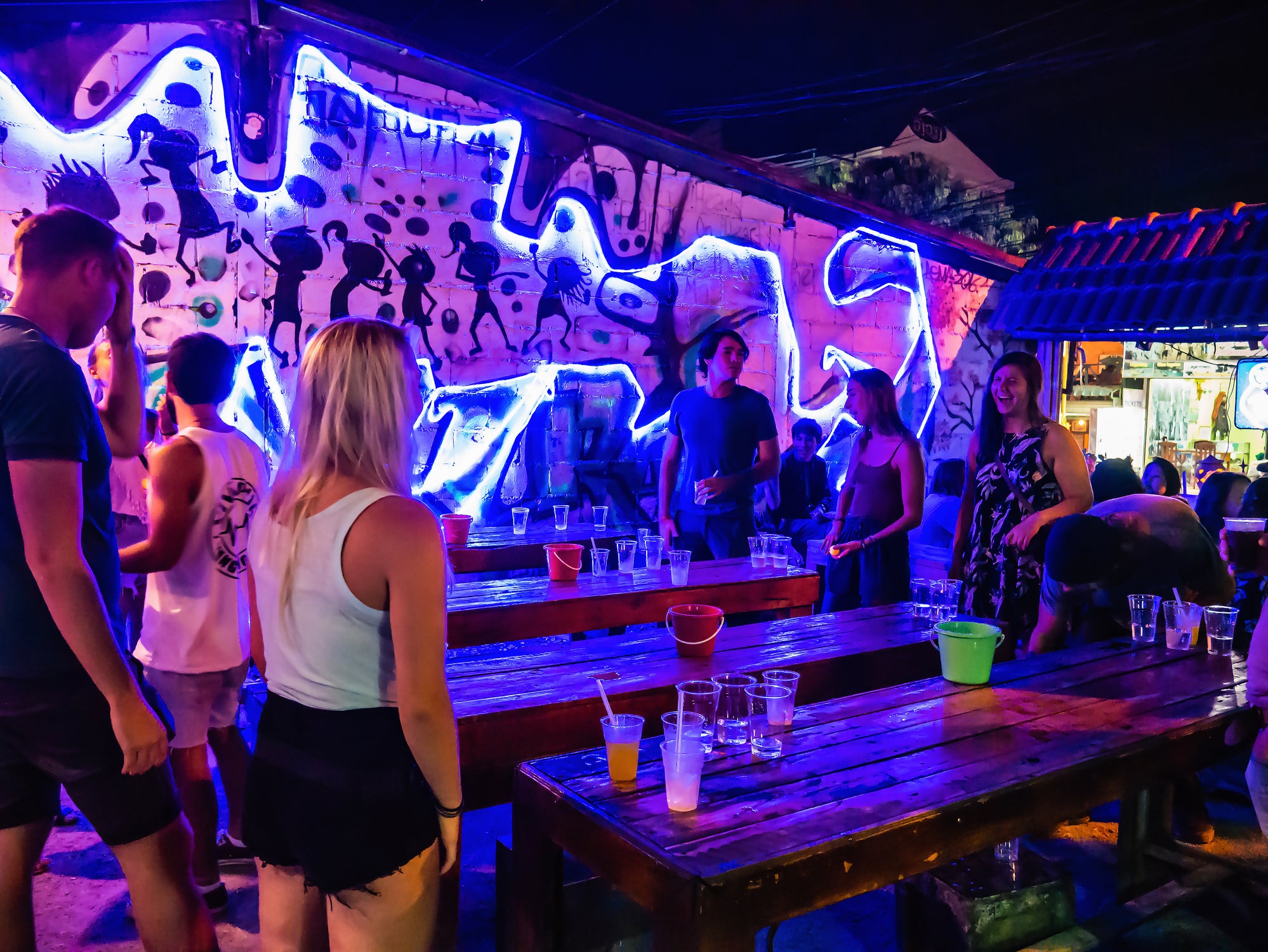Table of Contents
Six tourists who were staying at a youth hostel in Vang Vieng, Laos, died of methanol poisoning in November 2024. The methanol was believed to be in contaminated drinks.
Methanol – a colourless, tasteless liquid – is extremely toxic. As little as 60ml can be deadly – that’s less than a triple UK shot of alcohol (ethanol).
Methanol, unlike ethanol, is processed by our bodies to first form formaldehyde and then formic acid (formate). The body is unable to quickly clear large doses of formate and once formate is in our cells, it causes significant injury and death.
Formate gets into the mitochondria – the powerhouses of cells – causing them to become oxygen-depleted (hypoxia). Without oxygen, cells become damaged and die; this means all our important organs, such as our brain, kidneys and liver stop working, and this damage is often fatal, (nearly 45% in some cases) or leads to life-changing injuries.
The retina and the optic nerve are especially sensitive to methanol. Blindness (both partial and total) is an early symptom of methanol poisoning and can be caused by drinking as little as 10ml (two teaspoons) of methanol.

Methanol poisoning is very similar to the effects of ethanol (alcohol) poisoning, which can lead to delays in getting the right treatment. It is usually only when doctors notice that the patient is losing their sight that they realise that methanol is involved.
Once it is clear that the patient is suffering from methanol poisoning, doctors will try to stop any further methanol from being turned into the highly toxic formate.
A drug called fomepizole is used to achieve this, but this treatment is much more effective the sooner it can be given.
It may seem counterintuitive, but an alternative to fomepizole is to treat the patient with ethanol. The body processes ethanol in preference to methanol, which prevents a more deadly formate from being formed. However, the patient now needs to be treated for alcohol poisoning. This is a much better outcome, although requiring significant hospital care.
The signs of methanol poisoning
Travel Aware
Spotting methanol poisoning can be tricky, but there are key differences to watch for:
- Early signs: You might feel confused, dizzy, extremely tired, or even start throwing up.
- Serious symptoms appear 12-48 hours after drinking, so be vigilant even the day after. Headaches, nausea, seizures, or even slipping into a coma are common symptoms.
- Vision issues can also appear 12-48 hours after the first drink. Methanol poisoning can cause blurry vision, trouble looking at bright lights, and even complete blindness.
The next stage is to remove any remaining methanol or formate to prevent further damage to the patient. This is achieved by kidney dialysis, where a machine removes these toxins from the body. Since the patient’s liver and kidneys are not working, the dialysis machine is also needed to remove the waste that the body creates.
Together, these hospital interventions require significant expertise and equipment, which can place great strain on the local healthcare system. Transporting these critical patients to a better-equipped hospital is often required, as demonstrated in the recent poisoning, where patients had to be transported from Vang Vieng in Laos to Bangkok in Thailand.
Methanol contamination
Methanol is an important industrial solvent. It is also used in antifreeze, paint thinners and windshield washer fluid. Unfortunately, it does occasionally find its way into alcoholic drinks sold in bars.
There are two common causes when alcoholic drinks are contaminated with methanol. With home-style distillation of spirits, lower-boiling methanol can contaminate the final product. It is a matter of the distiller’s skill to prevent this, but it also reduces the yield of spirits – these compromises can be tragic.
A second cause is the deliberate substitution of cheap industrial methanol in place of highly taxed and controlled alcoholic drinks.

It is sad to note that methanol poisonings are relatively common around the world, with cases reported as far afield as Kenya, Turkey and Indonesia and can affect large groups of people – for example, in 2001, 154 people suffered from methanol poisoning in Estonia after they consumed counterfeit vodka.
The circumstances surrounding this latest celebration-turned-tragedy of methanol poisoning and the fact that it has affected young adults with so much potential are hard to rationalise. While it is difficult to account for the deliberate adulteration of alcohol, a somewhat forgotten cornerstone of the food and beverage industries is the quality control chemists and biologists working to prevent contamination of the products we consume with rigorous testing.
Chris Smith is a Lecturer in Chemistry at the University of Reading.
This article is republished from The Conversation under a Creative Commons license. Read the original article.

